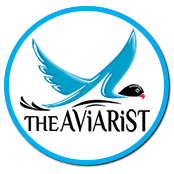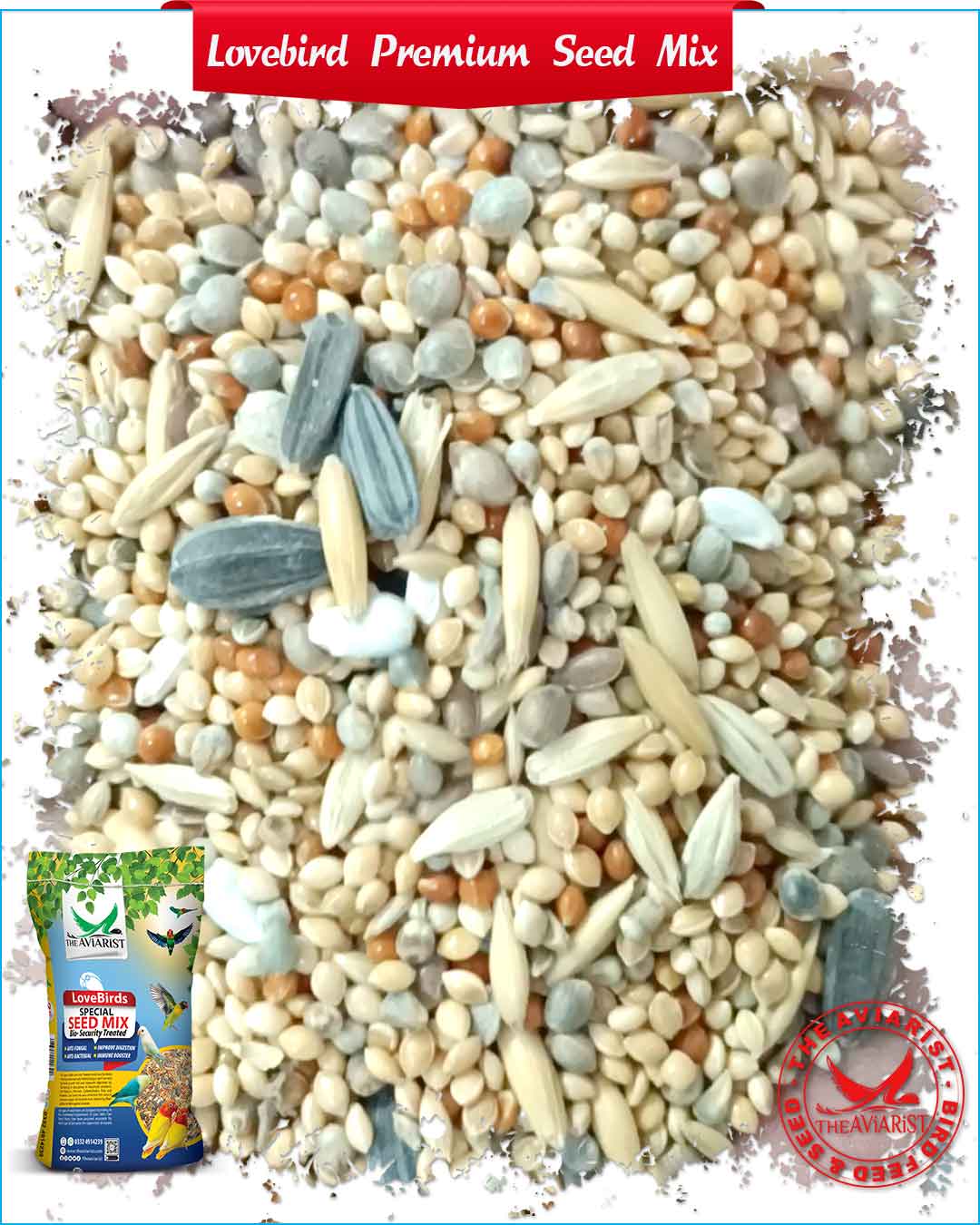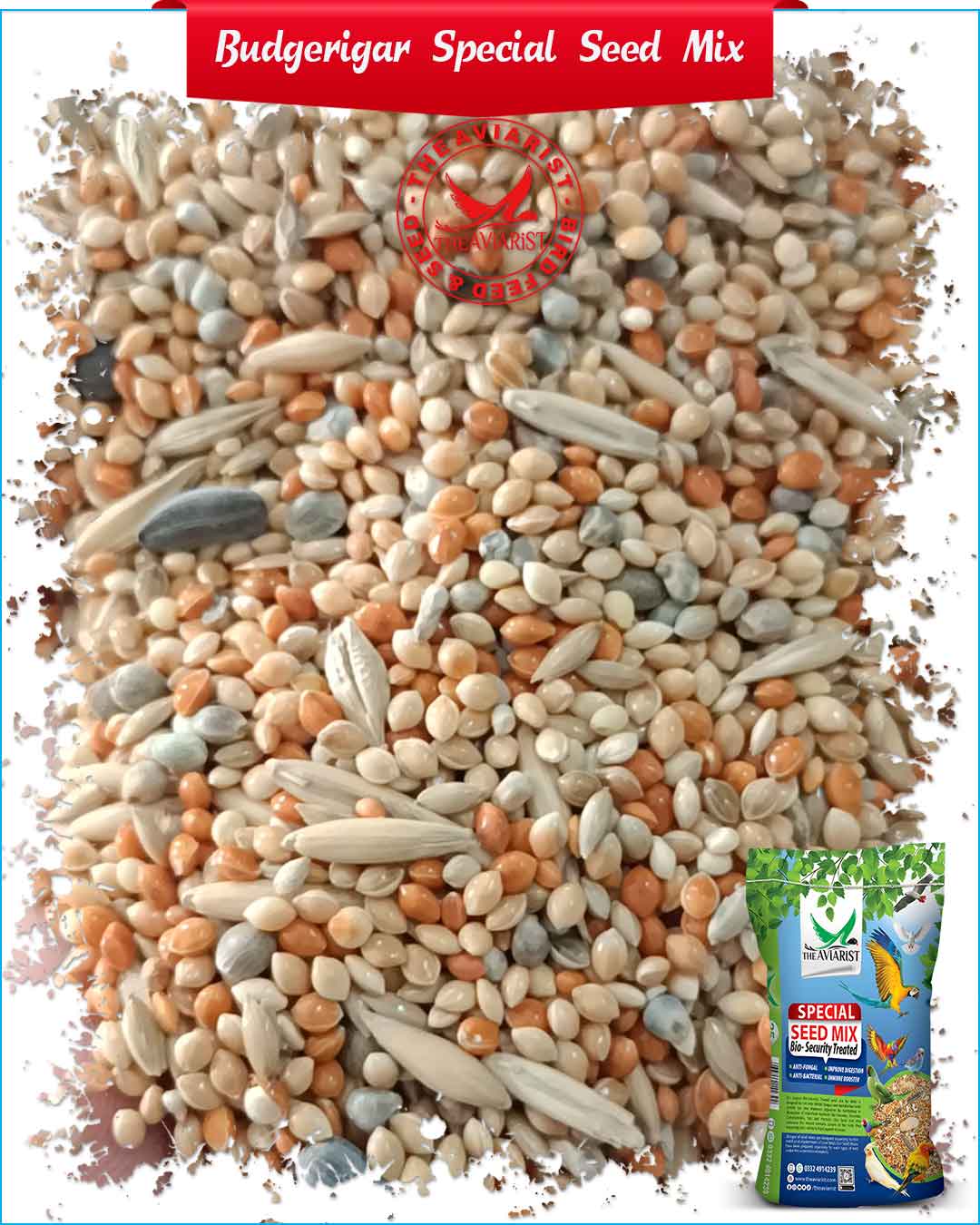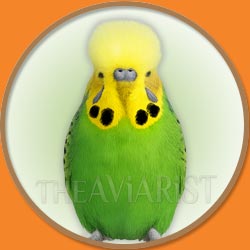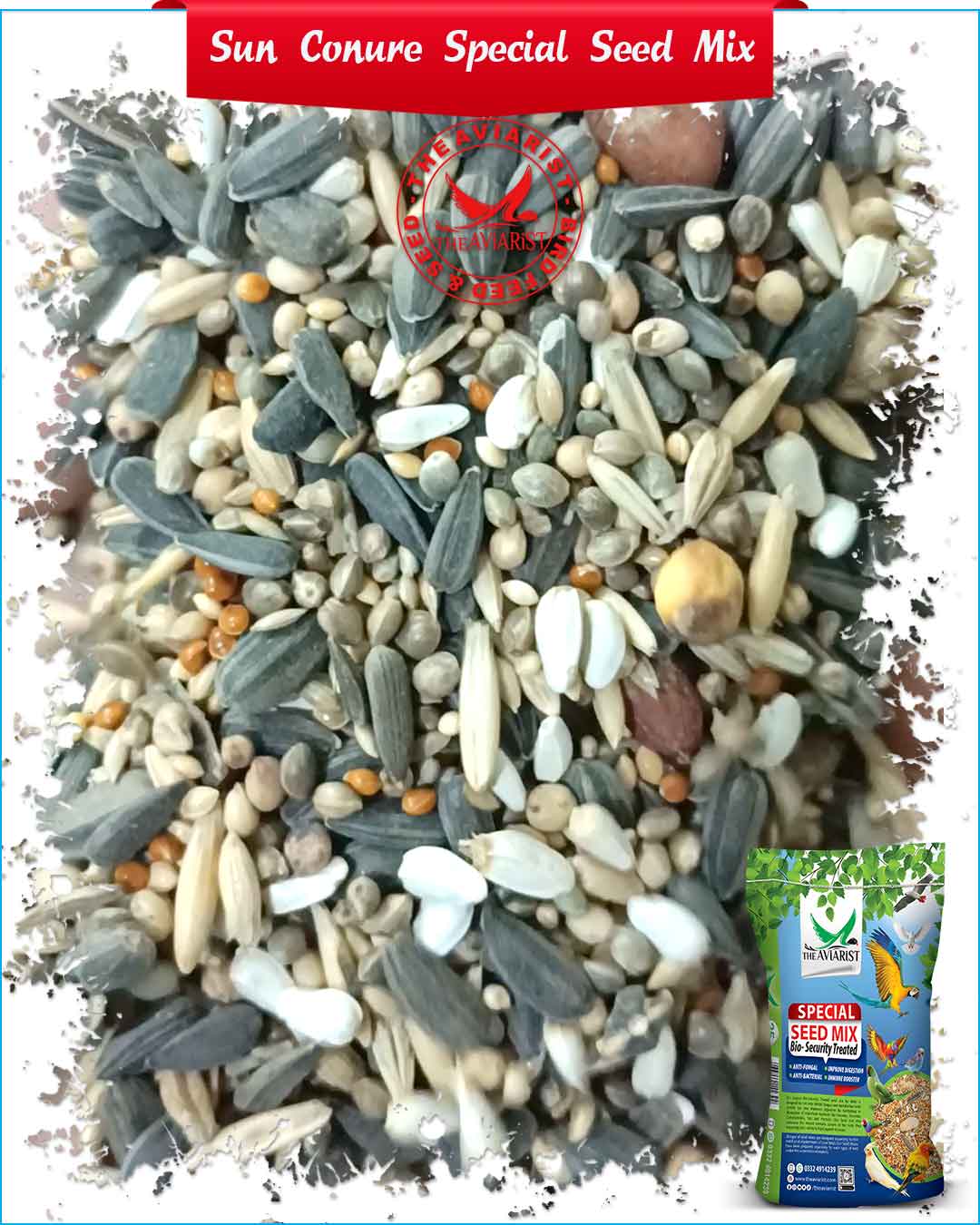Indian Ring Neck
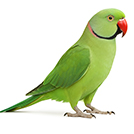
Indian Ringnecks are known for their curious, playful, and intelligent personalities. They are exceptional talkers, capable of developing a wide vocabulary and mimicking human speech with clarity. However, they also have an independent streak, requiring consistent socialization and interaction to remain tame and friendly.
Due to their stunning appearance, strong personalities, and talking ability, Indian Ringneck Parrots are highly prized both as pets and in aviary collections. Over time, selective breeding has also produced several color mutations such as blue, lutino, albino, grey, and cinnamon, further increasing their popularity among breeders and bird enthusiasts.
Indian Ring Necks are slender, graceful birds with long tails and a strong, curved beak. Their most distinctive feature is the colored “ring” around the neck, more prominent in males than females, which gives them their name. Typically, males display a black and rose-colored ring as they mature, while females usually lack or have a faint version of this marking.
A Complete Nutrition
At The Aviarist, we understand that the health, vitality, and breeding success of Indian Ring Neck Parrot depend largely on their diet. Our specially formulated Seed Mix for Indian Ring Neck Parrot is bio-security treated, ensures that Ring Neck Parrot receive safe, clean, and nutrient-rich food that supports their feather health, energy levels, fertility, and overall wellbeing.
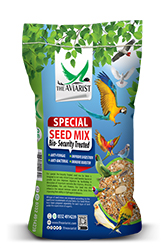
Special Seed Mix
Unlike ordinary seed mixes, our formula goes beyond just filling the seed cup. Every batch is carefully treated and enhanced to support the overall well-being, breeding performance, and immunity of your Ring Neck Parrot.
The Special Seed Mix is our core variant, trusted by many breeders. What makes it unique is that, it is regularly adjusted and upgraded according to seasonal changes and breeding requirements.
Tailored nutrition for breeder pairs
Adjusted fat and protein ratios for better breeding outcomes
Ensures strong fertility, better hatch rates, and healthier chicks
This mix is especially beneficial during pre-breeding and general breeding periods.
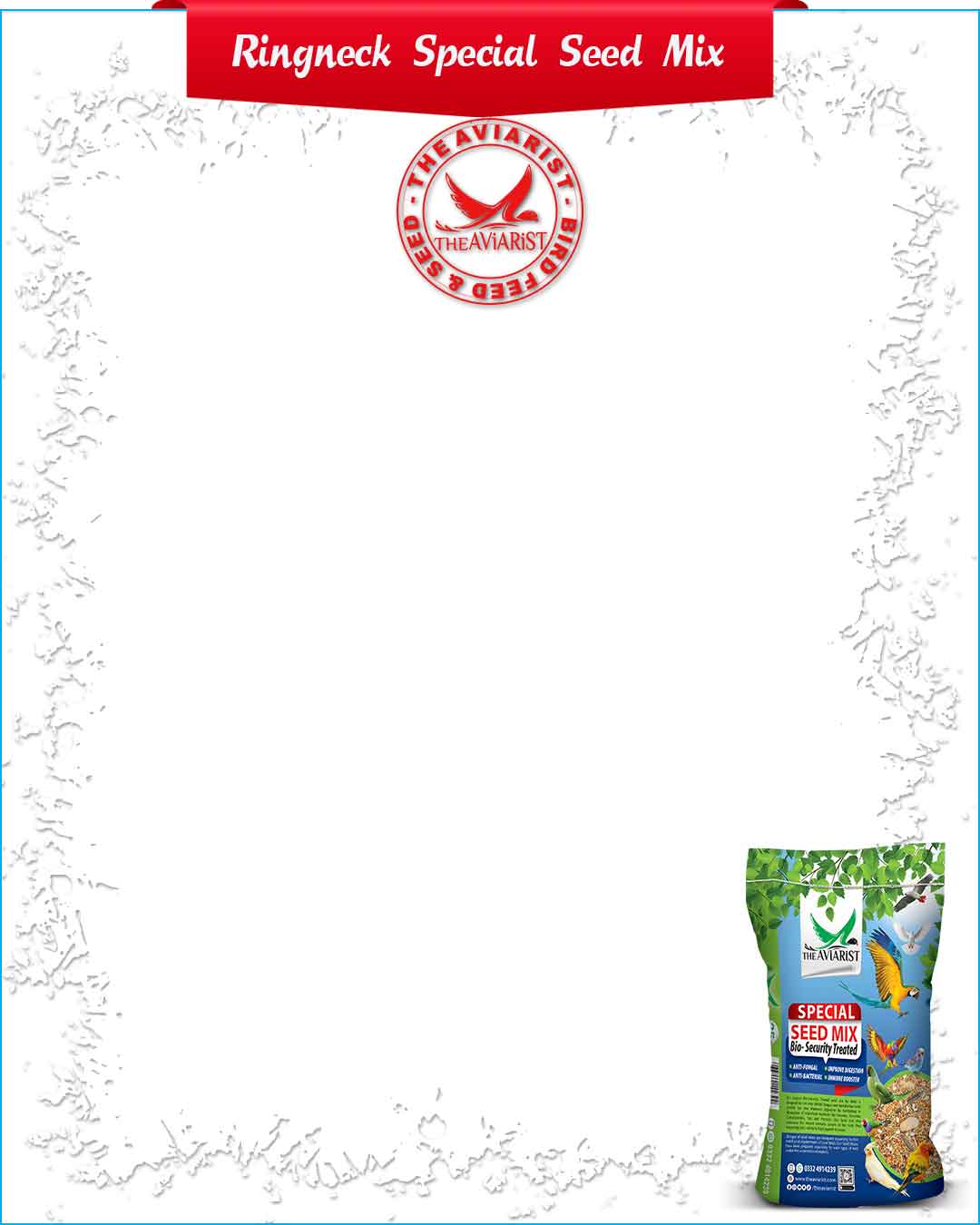
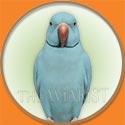
Key Ingredients:
| Ingredient | اجزاء |
| PROSO MILLET | سفید چینا |
| RED PROSO MILLET | لال چینا |
| CANARI SEED | کنیری |
| PEARL MILLET | باجرہ |
| HEMP SEED | بھنگ کے بیج |
| SUNFLOWER SEED | سورج مکھی |
| SAFFLOWER SEED | قرتم |
| OAT SEED | (جوی (جئی |
| BARLEY SEED | جوء |
| WHITE SORGHUM | جوارسفید |
| STRIPED SUNFLOWER SEED | ایرانی سورج مکھی |
| WHEAT | گندم |
| PEANUT | مونگ پھلی |
| PEANUT KERNAL | مونگ پھلی دانہ |
| ROASTED CHICKPEAS | بھنے ہوئے چنے |
Price Rs.280/Kg
Available in 10Kg & 25Kg Packing
Key Features
1. Bio-Security Treated Seeds
Every seed in our mix undergoes a strict bio-security process. This includes anti-fungal treatment that prevents the growth of harmful fungi such as Aspergillus, which can cause serious respiratory infections in birds. Additionally, the mix is treated to eliminate bad bacteria that often grow in untreated seeds and may lead to digestive or immune-related health problems.
2. Enhanced Digestion
Birds have a delicate digestive system that can sometimes struggle with raw seeds when kept in controled environment. To address this, our seed mix is enriched with special enzymes that aid in the breakdown and absorption of nutrients. These enzymes improve gut health, reduce digestive stress, and maximize nutrient utilization, ensuring that birds get the most from every seed they consume.
3. Immunity-Boosting Formula
A strong immune system is essential for protecting birds against common infections. Our blend is fortified with immunity-enhancing agents that help strengthen their natural defenses. This means your birds are better equipped to fight off seasonal illnesses, bacterial challenges, and environmental stressors.
4. Species-Specific Nutrition
Unlike generic bird seed blends, The Aviarist seed mix is specially crafted for species specific, keeping their natural habitat and dietary patterns in mind. The selected seeds provide the right balance of proteins, healthy fats, vitamins, and minerals that match their natural dietary needs.
Benefits
Healthier Plumage & Brighter Colors
Proper nutrition enhances feather quality, resulting in shinier, stronger, and more vibrant plumage—a sign of a healthy bird.
Boosted Energy & Vitality
With a balanced nutritional profile, birds remain more active, playful, and energetic, reflecting their natural behavior.
Stronger Immunity Against Diseases
The immunity boosting shield protect birds from bacterial and viral threats.
Improved Digestion & Nutrient Absorption
The added enzymes prevent bloating, indigestion, and seed waste, ensuring maximum nutritional benefit.
Longevity & Quality of Life
A safe and nutrient-rich diet contributes to a longer, healthier, and happier life for birds.
Breeding Benefits
Bird breeding requires an optimal diet rich in energy, proteins, and essential micronutrients. The Aviarist Seed Mix is designed to support the breeding cycle in several ways:
Enhanced Fertility in Pairs
Nutrient-rich seeds, combined with immune-boosting agents, improve fertility rates and increase the chances of successful breeding.
Stronger Egg Production
The bio-secure and enzyme-treated formula ensures the hen’s body efficiently absorbs calcium and proteins, leading to stronger, healthier eggs with better hatchability.
Healthy Chick Growth
Parents fed on this seed mix pass on enhanced nutrition to their chicks, ensuring stronger immunity, better feather growth, and healthy development from the very first days.
Reduced Breeding Stress
With improved digestion and higher energy reserves, breeding pairs remain less stressed during mating and chick-rearing, resulting in more consistent breeding success.
Indian Ring Neck Parrot
The Elegant Talker
The Indian Ring Neck Parrot (Psittacula krameri manillensis), also known as the Indian Ring Neck Parakeet, is one of the most admired medium-sized parrots in aviculture. Native to India and parts of South Asia, this species has been cherished for centuries due to its beauty, intelligence, and remarkable talking ability.
Appearance
The Indian Ringneck Parrot is a visually striking bird with a slender body and long, elegant tail feathers that give it a graceful look. Measuring about 14–17 inches (35–43 cm) in length, nearly half of this length comes from its distinctive tail. The average weight is around 120–140 grams, making it a medium-sized parakeet.
The natural or “wild-type” Indian Ringneck displays a bright green plumage, a yellowish-green underbelly, and blue-tipped tail feathers, with a bright red beak that stands out against its feathers. One of its most distinguishing features is the neck ring: mature males develop a prominent black line across the chin that curves into a rose or pink-colored band around the back of the neck. This ring usually appears between 18 months and 3 years of age, while females and juveniles generally lack this marking, giving them a more uniform green look.
Over the years, breeders have developed a wide variety of color mutations, including blue, lutino (yellow with red eyes), albino (pure white with red eyes), grey, cinnamon, violet, and turquoise. These variations add to the bird’s appeal and make it a favorite among aviculturists and pet enthusiasts. The combination of vibrant plumage, long tail, and distinct neck ring makes the Indian Ringneck one of the most recognizable and admired parakeet species in the world.
Personality and Behavior
Indian Ring Necks are known for their intelligence, curiosity, and lively nature. They are highly interactive birds that enjoy learning new words, mimicking household sounds, and engaging with their caretakers. Their ability to develop a wide vocabulary makes them one of the best talkers among parrots.
Although affectionate, they are also independent by nature. With proper training and socialization, they can form strong bonds with their owners while still maintaining their confident personality. Consistent handling from a young age helps them remain tame and friendly.
These parrots are very active and need ample space, toys, and regular out-of-cage exercise to stay mentally and physically healthy. Without proper stimulation, they can become bored, which may lead to undesirable behaviors such as feather plucking or excessive calling.
Care and Diet
The Indian Ringneck Parrot is an active, intelligent, and social bird that requires proper care and nutrition to stay healthy and thrive. Providing the right environment and balanced diet is essential for their long life and well-being.
Care:
Indian Ringnecks need a spacious cage or aviary that allows them to stretch their wings and climb freely. A cage size of at least 24 x 24 x 36 inches is recommended, with horizontal bars for climbing. Daily out-of-cage exercise is important to prevent boredom and obesity. These parrots are intelligent and require mental stimulation through toys, foraging activities, and regular interaction with their owners. Consistent socialization is key, as Ringnecks may become independent or nippy if neglected. Regular health check-ups, clean perches, and safe, hygienic housing conditions should be maintained.
Diet:
A well-balanced diet is vital for their health. Indian Ringnecks should be fed a mix of:
- High-quality pellets (as the staple diet, ensuring complete nutrition).
- Fresh fruits and vegetables such as apples, papaya, carrots, broccoli, leafy greens, and bell peppers.
- Soaked or sprouted seeds and legumes for protein and digestive health.
- Nuts (like almonds or walnuts) in moderation as treats.
- Cuttlebone or mineral blocks to provide calcium and support beak health.
Avoid feeding them chocolate, caffeine, salty, or sugary foods, as these are toxic to parrots. Clean, fresh drinking water should always be available.
With proper care, diet, and enrichment, Indian Ringneck Parrots can live 25–30 years or more, staying active, vibrant, and affectionate companions.
Mutations and Color Varieties
Through selective breeding, Indian Ring Necks are now available in a stunning variety of colors beyond their natural green. Some popular mutations include:
- Blue – Bright sky-blue feathers with a striking ring.
- Lutino – Pure yellow body with a red beak and red eyes.
- Albino (White) – Completely white plumage with red eyes.
- Cinnamon – Warm brownish-green tones.
- Grey – Elegant grey body with distinct markings.
- Turquoise, Violet, and Olive – Unique modern mutations highly prized among breeders.
These color varieties have made Indian Ring Necks one of the most sought-after parrots worldwide.
Why Choose Indian Ring Neck Parrot?
The Indian Ring Neck Parrot is perfect for bird lovers seeking an intelligent, talkative, and visually stunning companion. Their ability to mimic speech, their striking appearance, and their playful yet independent nature make them highly rewarding pets for dedicated owners. With proper care, patience, and training, these parrots bring beauty, joy, and lively conversation into any home or aviary.
Nutritional Requirements
Indian Ring Neck are medium-sized parrots that are active, intelligent, and long-lived. To keep them healthy, their diet must provide balanced proteins, fats, vitamins, and minerals . Because they are prone to obesity if given too many fatty seeds (like sunflower), their nutrition should be carefully managed.
Macronutrients
Protein
- Maintenance (pet/companion): 12–14% of diet.
- Breeding pairs & chick-rearing: 16–18%.
- Molting season: 14–16% to support feather renewal.
Role:- Provides energy, helps in absorption of fat-soluble vitamins, keeps feathers glossy.
Fat
- General health: 5–8% of diet.
- Breeding & high activity: Up to 10% (short-term).
- Indoor/pet birds: Keep closer to 5–6% to prevent obesity.
Role:- Provides energy, helps in absorption of fat-soluble vitamins, keeps feathers glossy.
Carbohydrates & Fiber
- 50–55% of diet.
Role:- Main source of daily energy and digestive support.
Vitamins
- Vitamin A: Crucial for eye health, immunity, and feather coloration (carrots, spinach, kale, red peppers).
- Vitamin D3: Needed for calcium absorption (sunlight exposure or dietary supplement).
- Vitamin E: Supports fertility, immunity, and antioxidant function.
- Vitamin K: Important for blood health and bone strength.
- B-Complex Vitamins: Regulate metabolism, nerve function, and feather health.
Minerals
- Calcium: 0.8–1.2% of diet (increase for breeding hens). Prevents egg-binding and supports strong bones.
- Phosphorus: Balanced with calcium (Ca\:P ratio 2:1).
- Magnesium, Zinc, Iodine, Selenium, Iron: Trace minerals needed for metabolism, immunity, and fertility.
- Cuttlebone/mineral block: Should always be accessible.
Breeding Season Requirement
- Protein: Increase to 16–18% for fertility and chick development.
- Fat: Slightly higher (7–10%) to provide energy.
- Calcium + Vitamin D3: Must be boosted to support egg production and prevent weak shells.
- Soft foods: Sprouted seeds, soaked pulses, chopped veggies, and egg food are highly beneficial.
Water
Fresh, clean water must always be available. Even mild dehydration causes stress, poor digestion, and reduced breeding performance.
Breeding Care
Breeding Indian Ringneck Parrots requires proper planning, care, and management to ensure healthy offspring and the well-being of the breeding pair. These parrots usually reach sexual maturity at around 2–3 years of age, and only healthy, unrelated, and well-bonded pairs should be selected for breeding.
1. Pre-breeding preparation (4–6 weeks before pairing)
- Select pairs: sexually mature at 2–3 years, healthy, unrelated, and behaviorally compatible.
- Veterinary check: fecal exam, parasite treatment if needed, general health screen.
- Quarantine & observation: new birds 30 days before mixing with your breeding flock.
- Conditioning diet: switch to a richer diet 4–6 weeks before breeding, high-quality pellets + sprouted/soaked seeds, cooked legumes, boiled egg (occasional), fresh dark leafy greens. Add cuttlebone/mineral block for calcium.
- Environment: stable light cycle (˜12–14 hours daylight to stimulate breeding), quiet location, temperature stable (around 22–28°C).
2. Introduction & bonding
- Stepwise introduction: start with cages side-by-side for visual contact (1–2 weeks), supervised joint sessions, then a shared cage/aviary when relaxed.
- Watch behavior: mutual preening, feeding each other, and calm perched proximity are good signs. Stop pairing attempts if aggressive behavior appears.
3. Housing & nesting
- Cage/aviary size: minimum 36" × 24" × 24" for a pair; larger aviaries are preferable for natural behavior.
- Nest box: wooden box 12" × 12" × 18" with a concave floor to stop eggs rolling; entrance hole 6–8 cm diameter.
- Bedding: clean wood shavings or untreated sawdust (avoid cedar/treated wood).
- Placement: quiet, moderately elevated spot with low disturbance and good ventilation.
4. Courtship, egg laying & incubation
- Signs of readiness: active courtship feeding, copulation, nest visiting, increased vocalizing.
- Clutch size: typically 3–6 eggs.
- Incubation: 22–28 days (female usually incubates most; male supplies food/support).
- Minimize disturbance during incubation, limit nest checks and loud activity nearby.
5. Nutrition during breeding & incubation
- Macronutrient targets (practical ranges): protein 16–20%, fats 8–12%.
- Key foods: high-quality pellets as staple, sprouted/soaked seeds, legumes, boiled egg (small amounts), fresh vegetables (kale, broccoli, carrot), fruit occasionally.
- Calcium & minerals: cuttlebone, mineral block, crushed clean eggshells if needed.
- Hydration: fresh water always available. Avoid excessive fatty treats (sunflower seeds) which can unbalance diet.
6. Hatching & chick rearing
- Chicks: altricial, blind/helpless at hatch; both parents usually feed via crop.
- Support parents: offer soft, protein-rich foods (soaked seeds, soaked pellets, sprouts, mashed vegetables, egg food) to maintain parents’ crop quality.
- Monitoring: daily visual checks for feeding activity and chick growth; weigh chicks if possible.
- Hand-feeding: only if parents fail to feed, use commercial hand-rearing formula and sterilized equipment; best performed by experienced keeper or under vet guidance.
7. Weaning & socialization
- Weaning age: usually 8–10 weeks. Start introducing pellets and solid foods gradually.
- Separation: transfer weaned chicks to a separate cage for taming and to prevent bullying.
- Early taming: gentle handling, short sessions, and positive food associations build a friendly temperament.
8. Post-breeding recovery & scheduling
- Rest period: allow breeding pairs 2–3 months rest (or longer) before next clutch to restore body condition.
- Post-breeding check: vet exam and weight/condition assessment; continue enrichment and balanced diet.
9. Health, hygiene & record keeping
- Cleanliness: clean feeding dishes daily; change nest bedding between clutches and clean/disinfect nest box when empty.
- Biosecurity: quarantine new stock, limit visitor access, and isolate sick birds immediately.
- Records: keep dates for pairing, egg laying, hatch, mortality, weights, vaccinations/treatments, useful for troubleshooting and improving success rates.
10. Common problems & quick remedies
- Egg binding: emergency, seek vet immediately.
- Abandonment/neglect: provide supplemental feeding or prepare for hand-rearing.
- Low hatch rate: review male fertility, incubation behavior, and nutrition; consult avian vet for testing.
With proper care and management, Indian Ringneck Parrots can successfully breed and raise healthy young, making them both rewarding companions and valuable in the aviculture trade.
Commercial Breeding of Indian Ringneck
The Indian Ringneck Parrot holds significant commercial value in aviculture due to its striking beauty, strong talking ability, and long lifespan. As one of the most sought-after parakeets, both in domestic and international markets, its breeding has become a profitable venture for bird breeders.
A major factor contributing to its commercial importance is the wide variety of color mutations developed through selective breeding. Popular mutations such as blue, lutino, albino, violet, turquoise, cinnamon, and grey attract bird enthusiasts and collectors, often commanding premium prices. The availability of these color varieties ensures consistent demand in the pet trade.
Indian Ringnecks are also renowned for their intelligence and ability to mimic human speech, making them highly desirable companion birds. Their adaptability and popularity across Asia, the Middle East, Europe, and North America further increase their commercial breeding value.
Breeding pairs generally produce two clutches per year, with each clutch containing 3–6 eggs, offering breeders a steady opportunity for returns. Maintaining proper diet, housing, and health care enhances reproductive success and chick survival rates, directly impacting profitability.
In summary, the Indian Ringneck Parrot is not only admired as a pet but also plays an important role in the commercial bird trade, where responsible breeding and quality care ensure both economic benefits for breeders and the continued availability of healthy, well-socialized birds for enthusiasts worldwide.
Why The Aviarist Seed Mix?
To maintain good health, Indian Ring Neck Parrots need 12–14% protein (up to 18% in breeding), 5–8% fat (up to 10% in breeding), and a diet rich in carbohydrates, vitamins, and minerals. With the right balance, they stay energetic, fertile, and beautifully feathered. A scientifically balanced diet like The Aviarist- seed mix ensures your Ring Necks thrive in both companion care and breeding programs.
